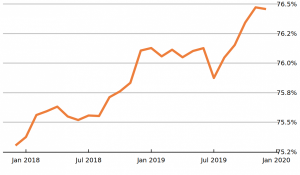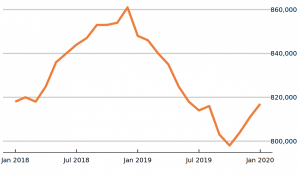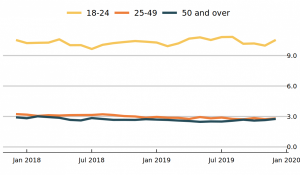March 2020
The latest labour market figures published on 17 March are positive with a large rise in employment in the quarter, despite the unexpected rise in unemployment.
- Unemployment is 1,343,000, which has increased by 54,000 from last month’s published figure (quarterly headline up by 63,000) and the unemployment rate was 3.9%, up by 0.1 percentage points on last month and also rose by 0.1 percentage points on last quarter.
- The ONS figure for claimant unemployed is 1,246,100, rose by 17,300 on last month, and the claimant rate is 3.5%.
- The number of workless young people (not in employment, full-time education or training) is 976,000, is up by 2,000 on the quarter, representing 14.2% of the youth population (up by 0.1 percentage points).
- Youth unemployment (including students) is 506,000, and is up by 34,000 on the quarter.
- There are 1.7 unemployed people per vacancy.
- The employment rate is 76.5% (it showed no change on last month’s published figure and increased by 0.3 percentage points in the preferred quarterly measure).
Chart 1: UK unemployment (ILO)
The latest unemployment figure is 1,343,000. It is up by 54,000 from the figure published last month. The unemployment rate rose by 0.1 percentage points to 3.9%.

Chart 12: Employment rate in the UK
The employment rate rose by 0.3 percentage points over the quarter, to 76.5%.

Chart 9: Vacancies – whole economy survey
Vacancies (in the Office for National Statistics survey of the whole economy) rose this month, to 817,000. As the number of vacancies is quite volatile, and frequently revised, the Office for National Statistics uses a three-month average.

Chart 5: Unemployment rates by age
The 18 to 24 year old unemployment rate (including students) is 10.5% of the economically active – excluding one million economically inactive students from the calculation. The rate for those aged 25 to 49 is 2.8%. For those aged 50 and over it is 2.8%. The quarterly change is up 0.3 for 18 to 24 year olds, up 0.1 for 25 to 49 year olds, and up 0.1 for the over-50s.
